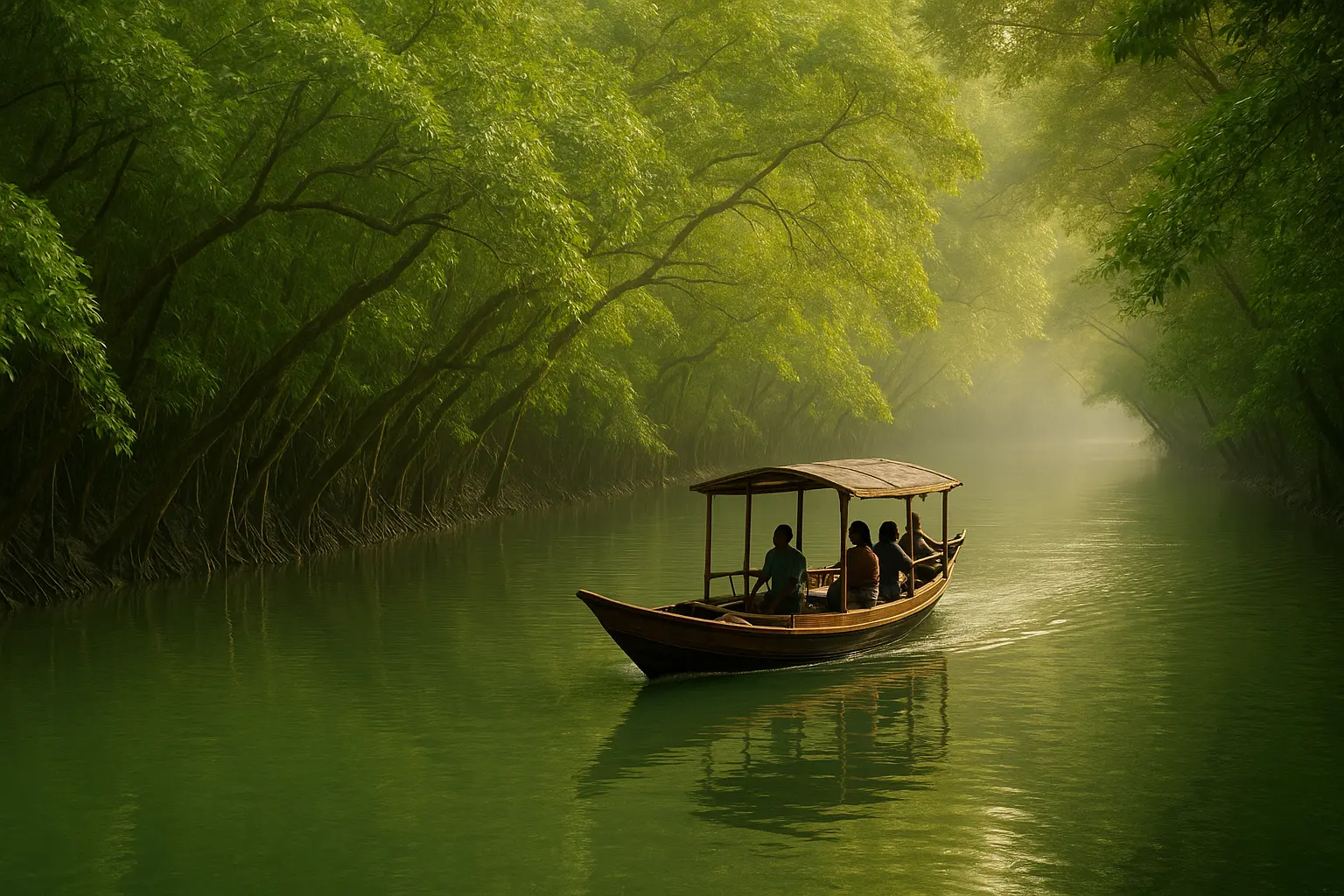Bangladesh is fast positioning itself as South Asia’s next sustainability-minded hotspot: international arrivals rose by 18 percent in the first half of 2025, fuelled by the government’s “Visit Bangladesh” campaign, new green-infrastructure projects, and a surge of community-run eco-tourism ventures in wetlands, forests and hill tracts. Yet the same rivers, mangroves and beaches that draw visitors remain on the climate front line, pushing policy-makers, local entrepreneurs and global partners to embed resilience into every layer of the visitor economy.
1. Tourism on the Rise—But on New Terms
Bangladesh Tourism Board figures show a sharp rebound after the pandemic, with spending topping USD 391 million in the last pre-Covid benchmark year and trending upward again from 2023. The “Visit Bangladesh 2023” campaign built fresh buzz around signature destinations—Cox’s Bazar, the Sundarbans, and the hill districts—while promoting off-path heritage circuits in Paharpur and Mahasthangarh. Crucially, new visitor-service portals now bundle e-Visa rollout updates and real-time weather alerts, part of a digital-first strategy the Bangladesh Monitor calls a “fast-track to responsible growth.”
Snapshot: Key Growth Indicators
| Metric | 2019 (pre-Covid) | 2023 | H1 2025 | Trend |
| International arrivals | 323 000 pax | 210 000 pax | +18 % YoY | Upward |
| Tourism receipts (USD) | 391 m | 218 m | n/a | Recovering |
| Visitor-spending share on eco-tours | 12 % | 19 % | 25 % (proj.) | Growing |
2. Nature’s Bounty—And Vulnerability
Bangladesh’s seven-hundred-plus rivers, the world-length record beach and the Sundarbans mangrove labyrinth underpin its eco-brand, yet all face erosion, salinity intrusion and plastic pollution. A landmark April 2025 ban on new factories within 10 km of the Sundarbans aims to buffer that UNESCO site from industrial run-off and cyclone-carried toxins. During the monsoon breeding season (June–August 2025) park authorities have even suspended tourism in the core tiger reserve to reduce stress on wildlife.
Climate-Ready Infrastructure
The 2025 update of Bangladesh’s National Adaptation Plan now requires solar rooftops, rain-water harvesting and cyclone-resilient design for all new coastal hotels and marine-drive cafés. Similar green-building standards guide the Sabrang Tourism Park, a 940-acre special economic zone in Teknaf that sets aside 100 acres for low-impact foreign-tourist facilities.
3. Communities at the Centre
- Jaflong, Sylhet – An ILO-supported community-based tourism (CBT) model trains locals as guides, homestay hosts and waste-management stewards, keeping 60 % of tour revenue inside the village.
- Naikkhongchari, Bandarban – A 15-day UNDP programme upskilled 90 youth in hospitality, linking indigenous culture with trekking circuits that cap visitor numbers at 12 per guide.
- “Otithi” initiative – BRAC’s nationwide scheme bundles micro-loans and marketing support for women-run eco-cottages, currently active in 26 districts.
These grass-roots projects dovetail with what The Daily Star calls “peace-sensitive tourism,” using cultural exchange to curb conflict and empower marginalised groups.
4. Spotlight: The Sundarbans Learning Lab
Cyclone Remal (2024) tore through the world’s largest mangrove forest, yet recovery efforts illustrate Bangladesh’s adaptive ethos: mangrove re-plantation corridors double as educational boardwalks, and new house-boats run on hybrid solar-diesel engines. Visitor quotas, night-stay bans, and mandatory local-guide hiring now form a “learning-lab” model exported to Tangua Haor wetlands and St Martin’s Island coral zone.
5. Heritage & Urban Green Corridors
UNESCO recently praised the conservation-tourism balance in Bagerhat’s mosque city, where improved access roads and interpretive centres were completed without altering the 15th-century brickwork. Similar eco-corridor concepts are planned for Sheikh Russel Aviary & Eco-Park in Rangunia, now receiving BDT 1.25 billion to integrate bird-watching loops with medicinal-tree plantations.
6. What Responsible Travellers Can Do
- Choose certified green operators. Look for CBT or “Eco-Friendly Bangladesh” labels vetted by BTB and NGOs.
- Offset and reduce. Opt for train or electric-bus routes, refill water bottles from hotel UV stations, and pack reef-safe sunscreen for island visits.
- Respect seasonal rules. Avoid restricted months in the Sundarbans (June–Aug) and heed daily caps on Cox’s Bazar turtle-nesting zones.
- Spend locally. Homestays, craft markets and community-run trekking guides keep tourism dividends in rural economies.
- Leave no trace. Carry back all non-biodegradable waste; several sites now fine BDT 500 for littering.
7. Outlook
From solar-powered sea-resorts to mangrove-shielded cultural corridors, Bangladesh shows how a climate-vulnerable nation can turn risk into a regenerative tourism model—and in the process offer travellers raw beauty with a clear conscience. As the sector marches toward its pre-pandemic peak, the next five years will test whether visitor demand, corporate investment and community guardianship can stay in harmony. For now, the green shoots are unmistakable—and worth planning your 2026 itinerary around.
Contact Us if you are Looking for a Tour and Travel Agency in Bangladesh.

